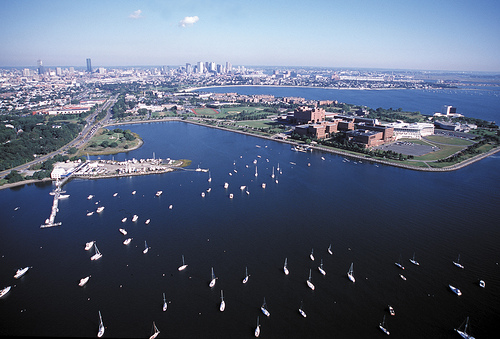| Class Home | Events | Assignments | Resources | Project Sites |

Capstone Course Vision
The premise for this course and my research is that the environment sets the limits for sustainable development.
From a forthcoming paper:
The methodology I use in my research is derived from a 1500 year old Native Hawaiian Ahupua’a approach. “This approach defines sustainable relationships among land, water and humans from the tops of islands to the coral reefs and open ocean. The main connection - as well as impediment - among the different self-sustaining units in this approach was both the quality and quantity of the water. Land stewardship practices were established to ensure that water used for agricultural purposes higher on the mountains was either unharmed or enhanced for downstream uses.”
The work you will do in this course will help evolve a similar interconnection between the City of Boston and Boston Harbor.
Course Description
The goal of this Capstone Course is for you to have the opportunity to become a steward engaged though working in interdisciplinary teams on a selected local environmental issue(s) and project sites.
In general, the environmental problem solving model involves 5 steps:
1) identify and diagnose a problem
2) set goals and objectives with stakeholders’ feedback,
3) design and conduct a study,
4) propose alternative solutions based on stakeholders' feedback, and
5) implement, monitor, and reevaluate.
Your groups will address the problems from both a social sciences (law, policy, economics, ethics, history, management, etc) and natural sciences (biology, chemistry, physics, geology, ecosystems, etc) perspective. Learning and teaching by doing a project will incorporate biomimicry approaches in potential solution and project designs. In addition, we will make sure that your projects will incorporate stakeholder feedback in the process.
Selected site activities and deliverables will include:
- Basic environmental assessment and site inventory
- Basic socio-economic assessment of local activities
- Use conflict assessment: what can and cannot coexist on the selected site; where are the current and potential use conflicts and why; what are the current and potential issues;
- Potential solutions and scenarios – based on the students findings and existing information students will develop and design solutions scenario(s) for selected sites;
- Establish a project ‘feedback loop’ – select natural and socio-economic monitoring sets of indicators;
Please note that currently the capstone class research is cumulative; spring and fall classes share a site. Each class builds on the work of the class before, helping steward the harbor for the long term.
